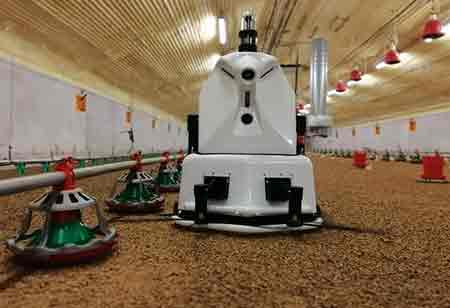THANK YOU FOR SUBSCRIBING
Be first to read the latest tech news, Industry Leader's Insights, and CIO interviews of medium and large enterprises exclusively from Food and Beverage Tech Review
How Robots Helps Farmers in Poultry Sector?
Poultry farmers have started to embrace technology to improve bird monitoring and precision management to get a good yield.

By
Food and Beverages Tech Review | Wednesday, May 06, 2020
Stay ahead of the industry with exclusive feature stories on the top companies, expert insights and the latest news delivered straight to your inbox. Subscribe today.
Poultry farmers have started to embrace technology to improve bird monitoring and precision management to get a good yield.
FREMONT, CA: Technology plays a crucial role in transforming how farmers interact with their livestock. Apart from this, the environment should be bio-friendly for animals. Farm design is a significant part of biosecurity. It is possible to retrofit systems into a current unit, and it's worth putting biosecurity at the heart of a new build. Biosecurity aids in keeping bacteria out of sheds, but it can also keep friendly bacteria, which can become more of a priority in the future.
Poultry farming and robots
[vendor_logo_first]Automating routine tasks is potentially a huge win for the broiler sector. This reduces the number of times a stockman has to enter a shed as well as enhances the biosecurity. But robots also have the potential to improve and enhance the total amount of data acquired in farms.
One available system is the Chickenboy, a smart broiler robot that travels along rails fixed to a shed ceiling and helps the farms by scanning the floor for dead birds. This intelligent robot also monitors about 10,000 droppings a day, giving a real-time indication of good gut health.
Free-moving robots can also examine every square meter of a barn and map out and monitor how air is moving through each part. There is also some evidence that these roving robots break up dominance in farms, likely to improve flock uniformity.
On-farming hatching technique
Broilers hens are typically grown within 30-40 days, or even before that, and they spend 19 days incubating inside the egg. Managing that transition is becoming a significant area of focus for those chasing to top performance. Recently, the Dutch have revised domestic law to ensure chicks have access to feed within 36 hours of hatch other than in the current 72 hours. Both trends show how early feeding is likely to become more common in the upcoming years.
see also: Top Food & Beverages Technology Solution Companies
I agree We use cookies on this website to enhance your user experience. By clicking any link on this page you are giving your consent for us to set cookies. More info


However, if you would like to share the information in this article, you may use the link below:
https://www.fbtechrevieweurope.com/news/how-robots-helps-farmers-in-poultry-sector-nwid-542.html





